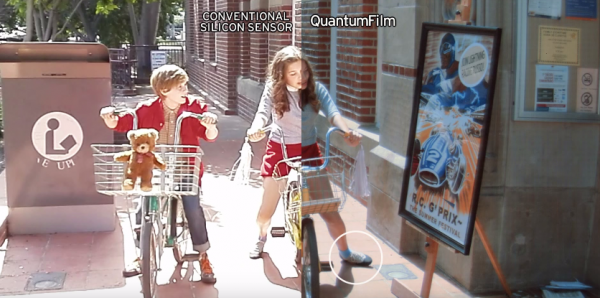Smartphone Camera Sensor Uses QuantumFilm Technology For Light and Motion Capture
InVisage Technologies Inc., the camera sensor company, announced the release of “Prix”, a short film shot entirely with InVisage’s QuantumFilm smartphone camera sensor. The film captures a stunning level of detail despite dynamic lighting environments and shooting fast-moving subjects outdoors. This quality is made possible thanks to InVisage’s QuantumFilm, a quantum dot camera sensor technology.
“Today, filmmakers of all types have access to HD-quality cameras through their smartphones,” said InVisage President and CEO Jess Lee. “However, achieving truly cinematic quality can be difficult without professional-grade cameras. Our expanded dynamic range capability is a major step forward in allowing smartphones to capture the tiniest of details across a wide range of lighting conditions. The results can be seen in ‘Prix,’ a charming short film about children who make their own technological innovations.”
During the production of “Prix,” cameras utilized InVisage’s QuantumCinema, a capability developed specifically for smartphone sensors equipped with QuantumFilm. Like photochemical film, QuantumFilm sensors have a non-linear response to light that allows them to preserve information in bright areas where a silicon CMOS sensor would typically saturate. This response, combined with higher photosensitivity and electron storage per pixel, enables QuantumFilm to show greater dynamic range in QuantumCinema mode.
“Prix” was also shot using InVisage’s exclusive electronic global shutter mode for smartphones, which eliminates a defect when shooting moving objects known as the “rolling shutter artifact.” All scenes were shot simultaneously with a comparable silicon smartphone using a rolling shutter–the only shutter mode currently available in smartphones–which captures parts of an image at different times. This delay causes obvious distortion when quickly moving subjects are shot with a moving camera. But with QuantumFilm’s global shutter, all parts of the image are captured simultaneously, resulting in unprecedented clear motion capture with a smartphone.









